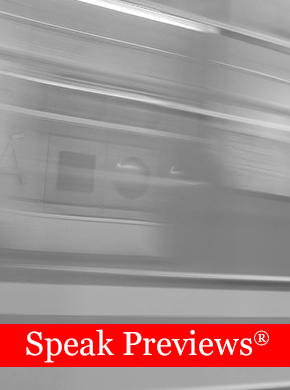Larger than life, huge, every hair distinct, that shred of spinach in your teeth looking as big as a cabbage. Welcome to your image, to the "you" an audience sees when the sponsor of your conference projects you and your slides on a very big screen above your head somewhere. Or to your side. Or to both sides.
You become larger than life, a transformation for which those sitting in the back of a cavernous room will be grateful. They'll be able to see and decode the visual cues that contribute to a listener's comprehension just as easily as someone in the front row can. They'll have the potential to connect with you as though they were listening in a much smaller room. They'll be able to see your supporting slides and illustrative visuals.
But largely, they will see you.
Most conference sponsors distribute reams of information well before the event, information to examine as you prepare and rehearse. Make special note of the following and resolve any concerns in advance:
- What is the number of screens, their location, their size, and what will they project – your image? Slides and other visuals?
- Do you need to stay behind the lectern or will the camera follow you if you move across the stage?
- Is a practice room available? How do you reserve one?
- Will you be using your own laptop or one provided by the organizers?
- How soon before your presentation must you provide the A/V technician with your slides?
- What operating system and software will be used? Any compatibility problems?
Image is not all. But it is part of your delivery and credibility. How you look on the screen will depend in part on the size of the screen and on the projector's resolution and input connections. Over those, you have no control.
But control what you can. Maintain a proper platform stance, taking special care not to drape yourself over the lectern or turn to the screen(s) to view slides or visuals. Keep your face and body oriented toward the audience; use facial expressions and gestures to maintain tone as well as to advance, emphasize, and clarify your message.
Decide how best to use eye focus. Speaking to the camera is one choice. The other is to select a series of focal points scattered throughout the audience and speak to each, even if all you can really see is an outline of a head.
Lighting is also important; if it creates shadows on your face, those shadows can make the difference in whether you come across with a pleasant smile or look mad or upset. Darker-skinned presenters may especially suffer this fate.
To combat that possibility, pay close attention to your voice and tone. Match both to the sense of your words and intention so that any shadows that fall do not twist either into a meaning not your own.
Lighting, too, affects the colors you wear and the shine you exude. To provide the audience with a good, clear image of you, choose muted or pastel colors; avoid white, red, and black as well as small prints. As for shine? Powder. Forehead, nose, and, if you've lost some hair up top, that area as well. Glare? Go matte with cosmetics, small with accessories, and light on the glossy hair products.
Presenting via projection allows you to connect with a multitude of listeners at once. That's why they—and you—are there. Make the most of the opportunity by removing obstacles to understanding, by projecting the best image of you, by creating a performance as large as your image.



